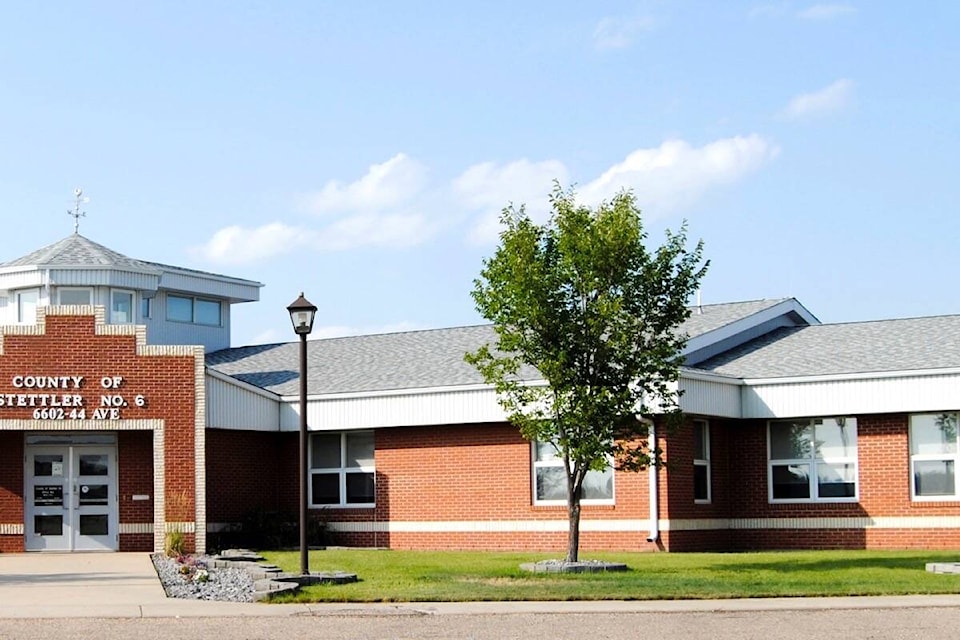After some heated discussion, County of Stettler council has chosen to limit where the funds in the Buffalo Lake South Shore Reserve Fund can be spent. The decision was made during the Oct. 12 council meeting.
The updated policy had been brought before council during the meeting for ratification after it had been posted online for public consultation.
While Yvette Cassidy, County of Stettler chief administrative officer, noted that administration received no feedback on the updated policy, Coun. Justin Stevens stated he had received a couple calls on it.
“Outside of the name, nowhere in here does it specify that (the funds) will only be spent on the south shore,” said Stevens.
Coun. Les Stulberg agreed with Stevens, noting that as a sitting councillor when the land which generate the funds was sold, keeping it for the community area was the initial plan.
“We made that promise,” said Stulberg.
“We should stand by it.”
Councillors Dave Grover, Ernie Gendre, and Paul McKay disagreed, feeling that the funds were generated by the selling-off of reserve lands and as such the county should be able to spend it where it wants.
“At the end of the day, we’ll consider anything out there,” said Coun. James Nibourg, speaking about proposals for the fund use.
Ultimately, Stevens motioned to approve the policy with an amendment that the funds only be used in the area of the South Shore Structure Plan.
The vote passed in a split vote, with Gendre, Grover, and McKay voting against.
Protective Services Vehicle
County of Stettler Protective Services had budgeted for a new vehicle in 2022 in the amount of $80,000.
After putting out quotes around the local municipality, and around the province, the county received four quotes back, two from local vendors and two from Calgary.
When asked, Protective Services manager Clint Sime did indicate that he personally dropped off tender requests at all the local dealerships himself, though only two chose to submit.
Once the quotes came in, administration’s recommendation was for the purchase of a 2023 Ford F-150 Police Special from Aspen Ford at a cost of $58,661, plus around $36,000 in emergency services equipment for a total price of $94,604.
Other tenders were Stettler Dodge, with a 2022 Ram for $45,804, Courtesy Chrysler (Calgary) for a 2022 Ram for $52,430, and Metro Ford (Calgary) for a 2023 Police Special for $57,498.
Sime noted that while Dodge had a lower cost for the vehicle, the company was only able to offer 2022 modey-year vehicles and the bid also left out several aspects such as increased fuel tank, anti-spin rear differential, side steps and a modified rear axle for better towing. The Dodge’s also had a lower overall mileage and ground clearance.
Finally, the cost to outfit the Dodge vehicle with the after market emergency equipment would cost more than the Ford, which would make the costs almost even.
Coun. Stevens noticed the emphasis on towing, and asked Sime about it.
“How often do you guys actually tow?” asked Stevens.
According to Sime, the answer is not that often; however, Protective Services does occasionally take side-by-sides or quads out for agricultural services or tow a boat out to the lake. The emphasis on towing also comes from the fact that at the end of the service life as a Protective Services vehicle, it will get turned over to fleet services and having the towing capability in place from the onset will prolong the vehicle’s service life.
Reeve Clarke wanted to know the difference between a police model and regular model of the Ford vehicle.
According to Sime, the Police Special comes with an upgraded transmission, upgraded wiring harnesses and special wiring to allow for the installation of emergency services equipment.
Coun. Les Stulberg motioned to go with staff administration to purchase the new vehicle, with the excess $14,605 to come out of the Rural Development Reserve. The motion was carried.
The vehicle should join the fleet in the next three-to-six months, depending on further supply chain snarls which seem to still be impacting nearly everything.
Lease-land policy
A second new policy administration brought forward for council consideration was that of lease-land
The updated policy would allow small parcels of county-owned land to be approved for rent by administration for grazing purposes without going to tender.
“It makes sense to me,” said Reeve Clarke.
Coun. Stevens agreed as well, noting that there is a small lease land in his ward that if not rented the county would have to mow.
One change Stevens noted that needed to be addressed was that of horses. While horses are currently allowed to be grazed on county-held land, the policy makes no mention of them.
“We’ll address this and bring it back,” said Cassidy.
The policy will be brought back for the November meeting, before going out for public review. The expectation is for the policy to be in place for the 2023 grazing season.
November council meeting
Due to council being at the Rural Municipalities of Alberta conference, the regularly scheduled meeting for Nov. 9 has been rescheduled for Tue, Nov. 15.
As usual, the meeting will be streamed via the county’s YouTube channel.
